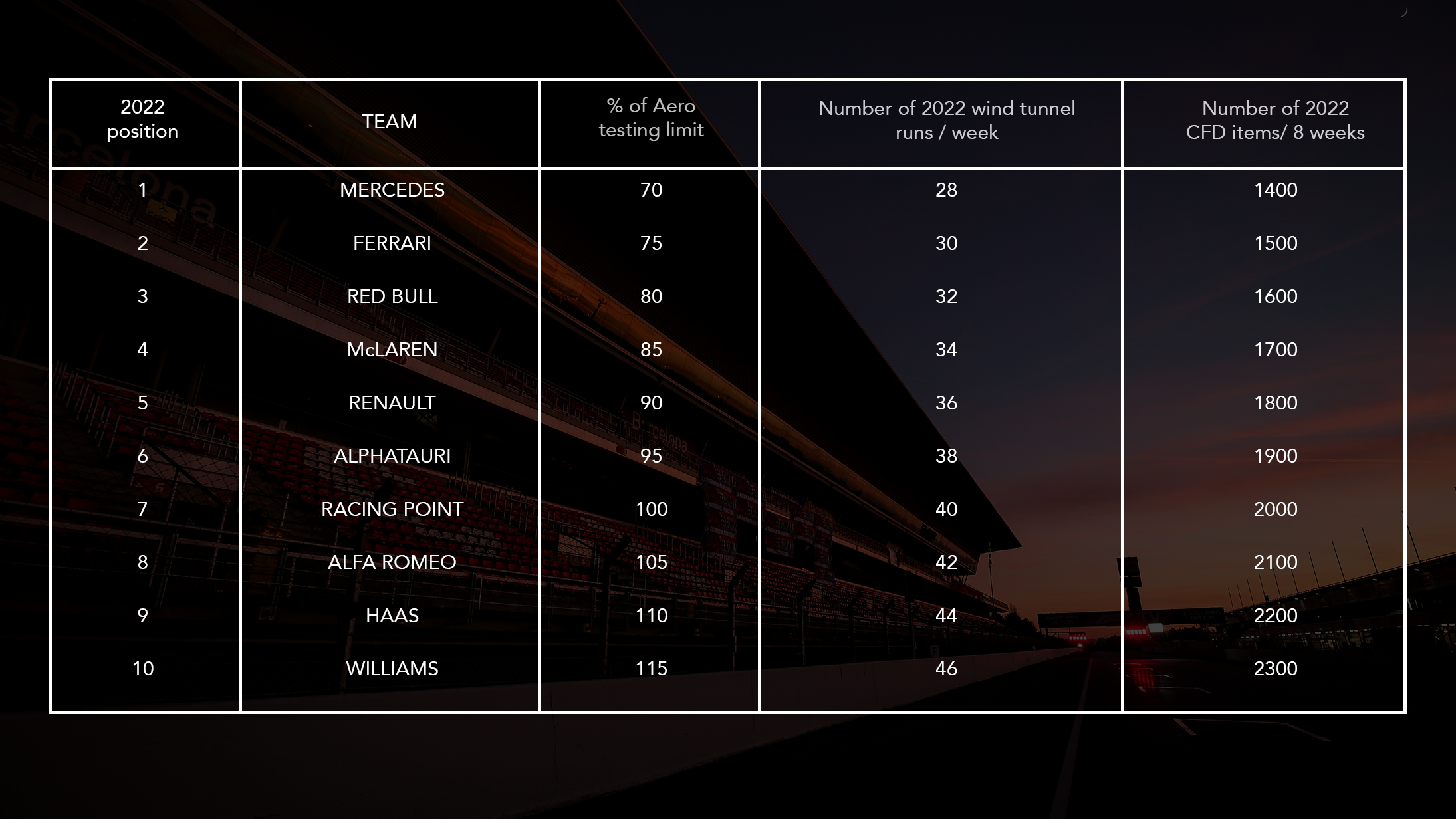Up Next

Formula 1 will introduce a method of performance balancing from 2021 with an aerodynamic development handicap that will eventually slash leading teams’ windtunnel work by more than half.
Aerodynamic development in F1 is restricted. Teams have a limited number of windtunnel runs and hours they are allowed to log, and the same goes for CFD work.
These are managed in eight-week blocks called Aerodynamic Testing Periods, or ATPs.
Though the amounts of time dedicated to windtunnel and CFD simulations are part of this, for the purpose of this explainer we are focusing on the number of runs and items teams can produce.
Currently, teams are restricted to 65 runs per week. For 2021, this was already being reduced to no more than 40 runs per week.
The number of CFD items that can be generated in an ATP will be capped at 2000.
Here’s where the handicap comes in. The team finishing last in the championship will be allowed 112.5% of those limits, dropping in 2.5% increments for each position to give the top team 90%.
Visualising the numbers should make this easier to understand.
Let’s say the 2019 championship repeats itself in 2020. The windtunnel and CFD restrictions for 2021 will look like this:

Mercedes would get the lowest with a maximum 36 windtunnel runs per week, with each team effectively getting an extra run right up to Williams on 45.
On the CFD side, you can the spread is much greater: 1800 items for Mercedes, 2250 for Williams.
But the handicap will be increased from 2022 to 2025, as this is a long-term project.
From 2022 it will be done in 5% steps. The team finishing last would get 115% of the allowance, dropping to just 70% for the winning constructor.
So the same respective championship positions would yield the following limits:

The maximum enjoyed by Williams barely changes but the spread through the order and the impact on the most successful teams is the significant consequence.
In this example, Mercedes, Ferrari and Red Bull would get less than half the number of weekly windtunnel runs they enjoy at the moment.
As for CFD work, the spread is also significant: the first-placed team drops to 1400 items, while the last-placed team gets 2300.
The handicap system will reset each year on June 30 to keep the system as relevant to the real order as possible.
So, the team that finishes last in the constructors’ championship in 2020 will get the maximum windtunnel/CFD allowance for the first half of 2021.
Then its allowance for the rest of 2021 will depend on where it is in the constructors’ championship as of June 30th.
Last week, Red Bull boss Christian Horner told The Race the impact of this new handicap system would be “significant”.
F1 is optimistic that will be the case. Looking at the way the restrictions are spread out in real terms makes it easier to understand why.
Major new technical rules are coming in for 2022 and development is not allowed to start on these until the beginning of 2021.
That means F1’s leading teams will have to work on the new technical rules with the handicap in place.
This threatens the domination enjoyed by Mercedes, Ferrari and Red Bull for so long and improves the opportunity afford to the likes of McLaren, Renault and Racing Point to close the gap – or a team like Williams to haul itself off the back of the grid.
The bigger teams are used to spending more to maximise the same limitations as everyone else. They’ll soon have the same budget as their rivals but greater limitations, as the blend of a cost cap and performance balancing attacks F1’s status quo.





